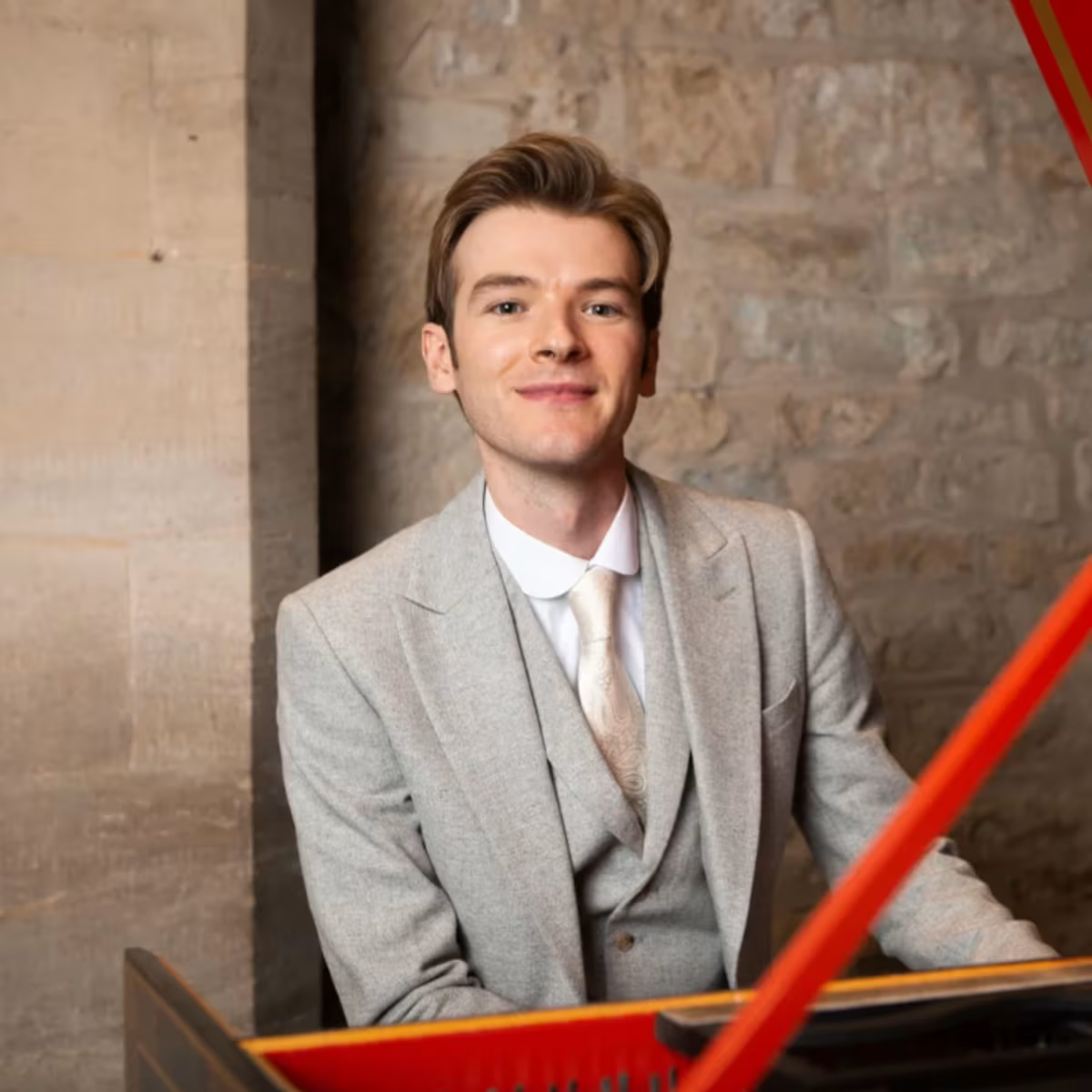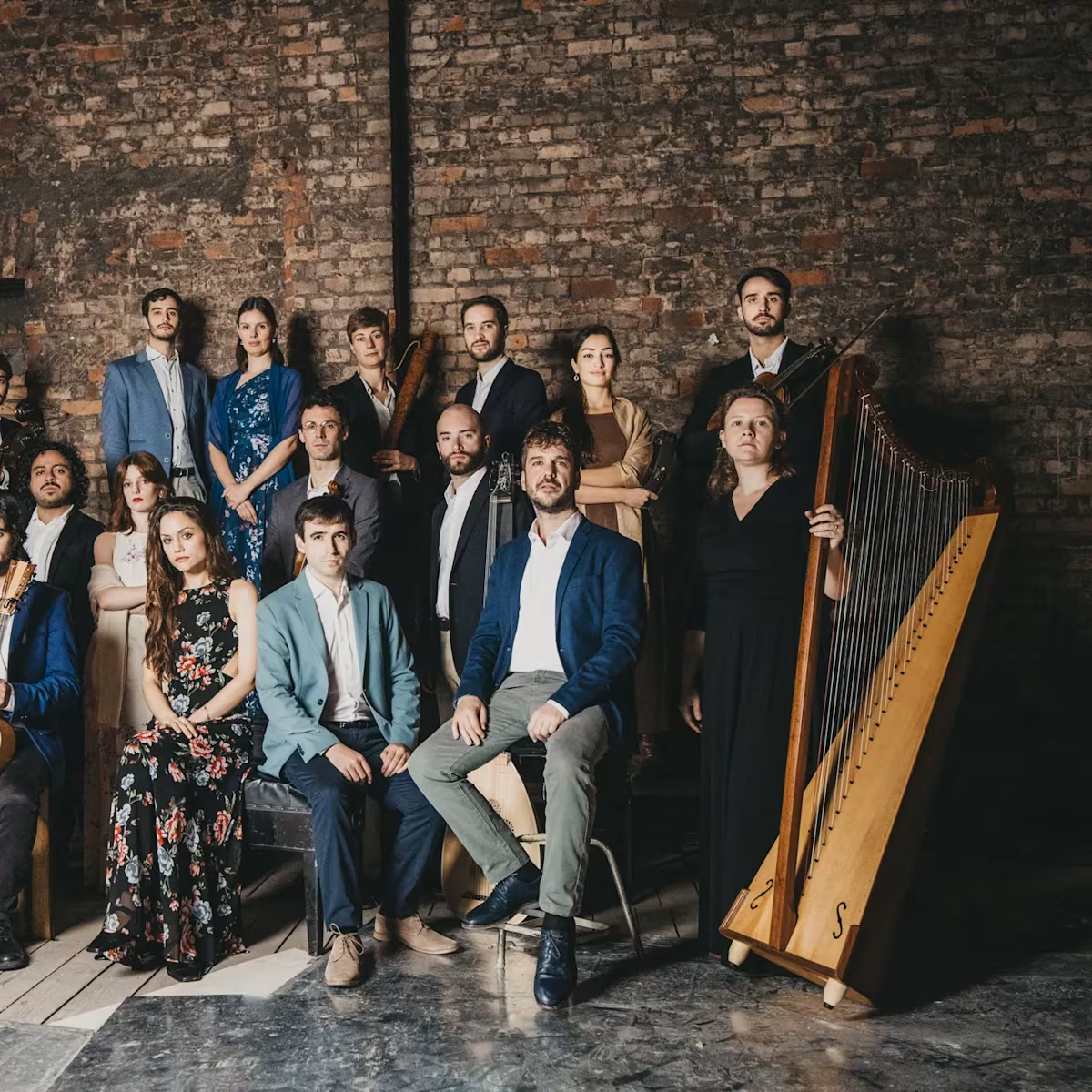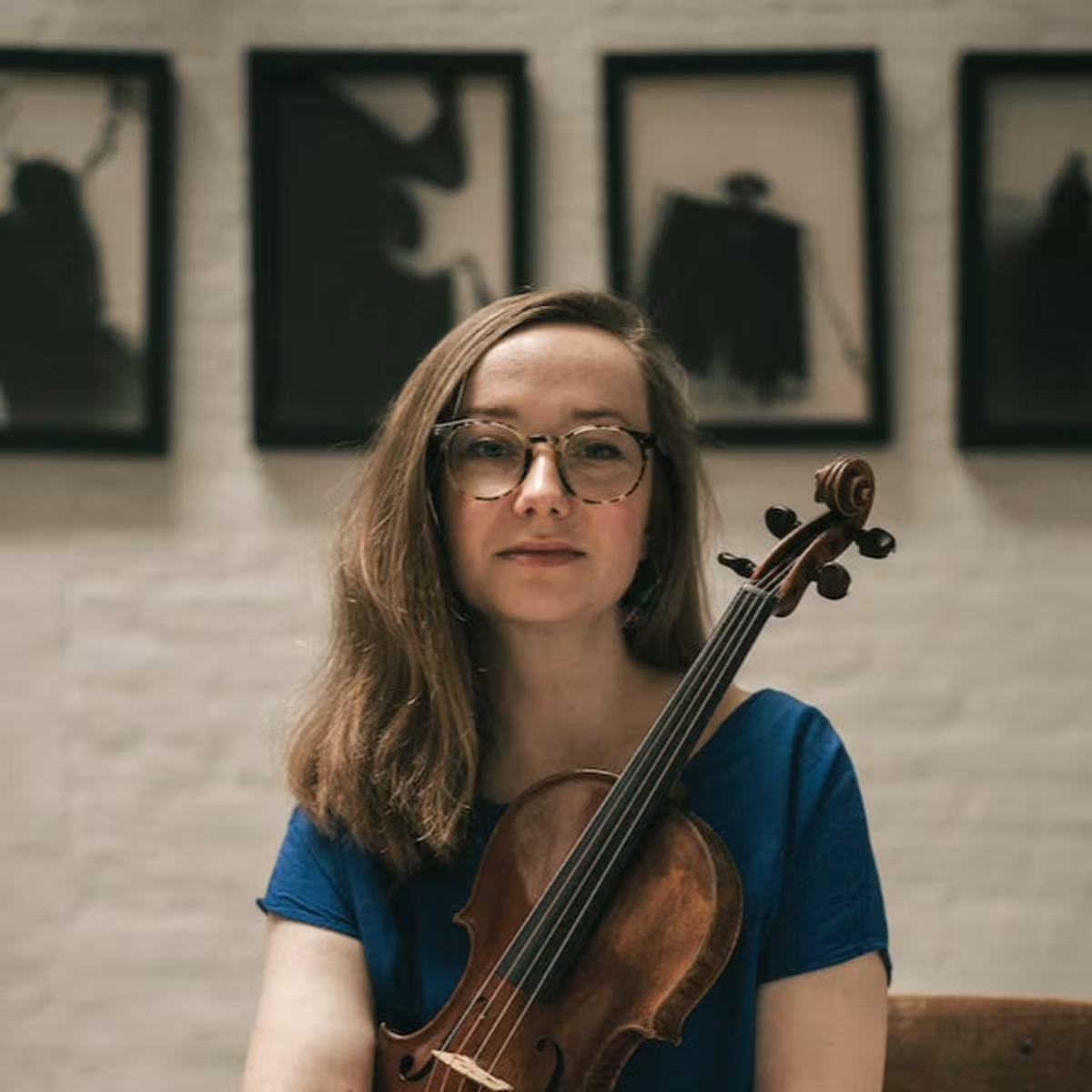Feature
Musick in Manchester
Manchester Baroque's reconstruction of Manchester's first public concerts in 1744-45
Share this

In 2019 Manchester Baroque began reconstructing the first ever public concert series known to have been given in Manchester. Performances started with the 275th celebration of the very first concert dated from November 2nd 1744. The reconstruction of the programmes and their historical programming concept is based on research by Manchester Baroque’s leader and Artistic Director, Dr. Pauline Nobes, who has written the following summary for Continuo Connect.
Historical context and the background story
I am delighted that we are forging ahead with the reconstruction performances of ‘Musick’ in Manchester 1744/45. It’s a privilege to reintroduce this captivating music into Manchester’s cultural and musical life today.
‘Musick’ in Manchester 1744/45 is a title I chose for this remarkable and, until now, much-overlooked historical concert series. It was whilst studying in Manchester that I happened upon a reference source at the Henry Watson Music library, a centenary review of ‘Manchester Concerts 1744’ by John Harland, a highly esteemed and prolific journalist and reporter. I found the article in a book taken from a vast collection of Chetham Society Publications, a great stretch of journals from the nineteenth century - Colletanea relating to Manchester and its neighbourhood at Various Periods… The full significance of my ‘discovery’ took a while to register: this report contained information about a concert series which not only fills gaps in Manchester’s musical history but also corrects the general belief that the Gentleman’s Concerts were Manchester’s first subscription concerts. And although I first staged programme reconstructions in Stellenbosch, South Africa with a follow up in 2016 in Würzburg, Germany with star guest Dame Emma Kirkby, it’s very special to be performing the reconstruction of the whole concert series in Manchester, the hometown, and city since 1853, where they were originally performed. These concerts are now a regular feature in our Manchester Baroque Concert Seasons with performances having already taken place in Manchester Cathedral, St. Ann’s Church, Stoller Hall and indeed further afield, as part of the Swaledale Festival, thanks to support from Continuo Foundation. We have already performed five of the sixteen programme reconstructions.
Apart from their musical interest, the subscription concerts of the 1740s happened in an intriguing historical context. The times were not encouraging for cultural enterprise and it was shortly before the second Jacobite Rebellion, the time when the Catholic Stuarts led by the Young Pretender, Bonnie Prince Charlie, invaded England with an intent to regain the throne and restore the exiled Stuart dynasty.
The original concert series’ subscription list includes many known Jacobite sympathisers, stemming from the principal elite families of the town and surrounding area. The Young Pretender, a keen collector of music and cellist on occasion, is also known to have visited before the Manchester Rebellion and it is thought by some that he may have been the ‘Mr. Anonymous’ listed as a subscriber for the first quarter of the series. Although the Jacobite armies did not cross the border to Carlisle until November 1745, and took possession of Manchester on the 29th, the Young Pretender’s purported visit a few months before coincides with the entry ‘no musick’ in the concert programme records for August 6th 1745, lending some support to the ‘conspiracy theory’ that, under cover of these ‘society’ concerts, the Young Pretender and his many sympathisers may have been securing rebellious plans.

The Jacobite rising provides an explanation for the dramatic decline in subscriber numbers as the 1744/45 series progressed, as well as the petering out of the records of concerts in the third quarter of the concert series. The last documented concert of the account book is 20th August 1745.
However, despite the difficult years that followed, and even though the next clearly documented concerts were not until 1753 (advertised in the newspaper Manchester Mercure, which started production in 1752), it is possible that similar chamber music concerts continued without any detailed account book records. In Manchester Public Libraries ‘The Journal of Elizabeth Byrom in 1745’, a young woman also known as “Beppy” Byrom (1722-1801) and daughter of Dr. John Byrom, shows mention of a concert on November 12th, seventeen days before Manchester’s ‘occupation’. (Dr. Byrom is known to have been a prominent supporter of the Jacobites and appears together with other family members in the subscribers’ list of the 1744/45 series).
Transcript of Events
The original documentation and literary record of our eighteenth-century subscription concert series was found in a small account book containing extraordinarily and uniquely detailed information about the concert programmes, names of the subscribers, the wardens, the musicians, helpers and others, payments made, music purchased and services such as ticket delivery, bellman, the transport and ‘several’ tunings of ‘ye harpsichord’ as well as ‘wine for ye performers’. Although this book, dated 1st November 1744, is now lost, a complete transcription was made in a nineteenth-century centenary report (John Harland*), first appearing in the Manchester Guardian in 1844. Once described as the ‘Father of Provincial Reporting’, journalist John Harland (1806–1868) wrote for the Manchester Guardian for thirty years, and his scholarly assiduousness and attention to the ‘minutest details’ were revered.
Harland also sheds light on the social and cultural milieu at the crucial and sensitive time following the Manchester Rebellion. Some of the subscribers who were Jacobite sympathisers came to a particularly nasty end. Officers of the Manchester Regiment were sent for trial to London and executed. The heads of three of them were returned to Manchester and displayed as traitors on top of the then Exchange, a warning to other Jacobites. One was a son of Dr Thomas Deacon, a non-juring bishop. When the aged bishop passed the Exchange, he reverently saluted the blackening remains, rejoicing that he had a son who endured martyrdom for the Stuart cause.

Harland’s reflections also provide an interesting perspective where contemporary musical taste and favour are concerned. One delightful comment, typical of its time and being re-addressed in our reconstruction concerts, reflects the changeability of musical appreciation and knowledge, not only regarding Vivaldi:
“If we take away the illustrious Germans, Handel and Hasse, and the Italian Corelli, what is known of the rest? Of Geminiani we have a sort of dim remembrance, partly from finding him named in old novels and tales of the period’ but who were Tessarini, Vivaldi, Lusinga, or Alberi? Who our own countrymen, Felton and Humphreys?”
Harland’s excitement at having been ‘favoured with’ seeing this ‘curious MS book’ with its accounts of the Manchester Subscription Concerts, whets our curiosity as to whether he was able to acquire the book for his own library. An avid collector, Harland left behind an immense collection of books for which there are two nineteenth-century, handwritten catalogues held in the archives of Manchester Central Library. These contain two intriguing entries: ‘Records, Public… 2. Quarto & Octavo’ as well as the hope-inducing description ‘Box in Loft’ (this will be followed up when time permits).
The account of the 1744/45 series, with its detailed listing of programmes, contrasts with later eighteenth-century records of concerts. These generally appeared in newspaper advertisements published before the event, as well as some surviving concert programmes, which were later amended (several examples remain intact with the stickers showing any relevant ‘correction’). Rather than advertising the programmes before the event, our 1744/45 records seem to describe exactly what had just taken place.
The listing of financial disbursements link neither name nor payments to specific instruments, but research sheds more light on the identification of performers who were paid. Judging by the differences in payment, it can be assumed that at least five of the most frequently occurring names were performers, and these professional earnings help to reveal the identities and instruments of some of the performers, whilst already possibly indicating the tradition of ‘importing’ players from London, a tradition that continues today. The concert repertory also plays its part in the identification of performers and vice versa.
The Performers
Steemson and his wife, Richardson, Whiteman, Derec, Dickanson[?], Marsden[?], Wainwright and Betts.
According to Harland’s transcript, Steemson and his wife participated in all but one of the first quarter’s six concerts, and appeared in all three quarters. Like others, they both took a reduction in ‘sums paid’ during the third quarter, presumably as falling subscriptions reflected the intensifying political situation. The only concert where Steemson’s wife is not present is the one where there are no ‘songs’, allowing us to conclude that she was the singer. According to Harland’s transcript, she and her husband Paul Steemson both earned £2. 2s (two guineas) per concert. For the concert without his wife, Steemson received £1. 1s which was one guinea (people of superior status were usually paid in guineas) and may therefore be considered as a core member of the ensemble, perhaps one of the solo violinists. That his wife’s fee is equal to her husband’s suggests a certain fame and notability for her. A catalogue of women composers working in London at the time identifies a Miss Steemson, perhaps a daughter or relative.
Richardson and Whiteman received higher sums of £1. 11s and £1. 16s respectively. Richardson is thought to be the flautist known to have been involved in the Manchester concerts later on in the eighteenth century (Jennifer Burchell). This concurs with the concert repertory of 1744/45, which strongly features the flute. Whiteman’s specific role may only be conjectured from the Musick. His slightly higher fee, even if partly for travel, suggests solo violin, although not necessarily ‘leader’ since he is not accounted for in either the opening or the third concert of the first quarter.
A stringed instrument, particularly the violin, is likely for Derec, who also received a guinea and is in every concert of the first quarter. Dickanson and Marsden may have been reimbursed with more modest fees for playing tutti or for other services. Dickanson is listed on one occasion after doorman, cleaner and ticket delivery (he and Marsden are both reported in other sources to have offered accommodation to the Young Pretender). Although the main players are mostly referred to by surname, other unidentified names may also be players: Miss Newton 2s (one evening) and Ned Jackson, whose ‘bill for the whole quarter’ was a fairly substantial £5. 15s 6d.
The most prominent name is ‘Wainwright’, that of a renowned musical family in eighteenth-century Manchester. John Wainwright (1723–1768) is the only member of his generation to be commended in current music reference works such as The New Grove Dictionary of Music and Musicians. In the second quarter, ‘Wainwright and his brother’ received a slightly higher fee of 13s. Further details of the Wainwright family are revealed in the journal Manchester Sounds (Sally Drage), although the identity of ‘his brother’ is still unclear.
It is likely that John Wainwright, then a young man, was the harpsichordist in these early Manchester concerts and it is not known which instrument his brother played, but the proposition that ‘Wainwright’ is John rather than the brother (who was worth only an extra 2s. 6d.) is supported by the following: the concert on November 27th introduces a ‘Mr. Betts’ for a one-off appearance. This is likely to be Edward Betts, organist of the Collegiate Church (later to become Manchester Cathedral), invited by John Wainwright who was for a time his assistant and succeeded him in the post in 1767. In this same concert Wainwright is seen to take a rise in fee, from 6s 6d. to 7s 6d., perhaps indicating a more established position and responsibilities. Mr. Betts was paid 10s. 6d. (half a guinea), which seems to be the highest ‘local’ fee. Wainwright took a second increase in payment for the last two concerts of the first quarter, also receiving 10s 6d. Naturally, it is not possible to be certain since musicians would often play more than one instrument and Wainwright, the well-known and accomplished keyboard player, may have played another instrument on the evening that Mr. Betts joined the ensemble, or perhaps the harpsichord workload was shared, assuming Mr. Betts was Edward and not a non-keyboardist relative or namesake. A singer is in any case ruled out as the ‘musick’ for this concert, as the programme is devoid of ‘songs’.
The exact size of the original ensemble is impossible to ascertain. The record book does not rule out amateur participation and may even imply semi-professional participation. John Alcock (before 1750) reported that at a performance in Stockport ‘all the Instrumental Parts, perform’d by Tradesmen (most of them from Manchester) amongst which were only two Professors of Music’ (Sally Drage). No slant or judgement is necessarily intended, but that professionals performed with tradesmen is confirmed. Perhaps the number of players in the first quarter of the Manchester’s concerts averaged between six and eight (professionals and the lesser-earning, potentially ‘semi-professionals’), but this was also open to expansion from an unrecorded involvement of unpaid musicians.
For the purposes of our Manchester Baroque performances, the many Concerti Grossi in the programme reconstructions involve at least eight players. This is based primarily on the conviction that the performance-practice option to play, for example, Corelli’s concertos either omitting or doubling the ripieno parts ‘at pleasure’ was primarily an eighteenth-century marketing ploy; a larger-scale concert, then as well as now, benefits from having all the available parts.
Opera sesta.
XII Great Concertos or Sonatas,
for two Violins and a Violoncello:
or for two Violins more, a Tenor and a Thorough Bass; which may be doubled at Pleasure, being the Sixth and last work of Arcangelo Corelli…Walsh, London [ca.1730]
The ‘Musick’
The sixteen programmes give an excellent picture of the variety of repertory in circulation at that time, as well as an indication of the manner of early eighteenth-century concert planning. They include between nine and thirteen pieces. One concert is divided into three ‘Acts’, the others into two.
The overall picture shows the music of Handel and Corelli to be the mainstay of the programmes, music which was clearly well-known in Manchester and the north of England. An alphabetic overview of named composers shows a relatively small list, but the mix of nationalities and the variety of musical styles are notable:
Alberti, Arne, Corelli, Gastrucci [= Castrucci], Felton, Geminiani, Handel, Hasse, [Hayden], [Howard], Humphreys [or Humphries], Sammartini, Tessarini, Vivaldi.
Perhaps surprising, in descending order of appearance, are the relatively frequent appearances of Tessarini, Geminiani and Humphreys. These are followed by an equal number of works by composers perhaps even less familiar today, namely Felton, Hasse, Hayden and lastly, with only one appearance each, Alberti, Arne, Howard, Sammartini and Vivaldi.
From Harland’s transcript of concert programmes, although sketchy at times, many works can be identified, particularly when they are by well-known early eighteenth-century composers such as Handel and the Italians Corelli, Geminiani and Vivaldi, where others are only vaguely described. The gaps left by the most minimalistic descriptions such as ‘song’ or ‘lesson’ are filled in by identifying appropriate compositions amongst the works likely to have been available to the Music Society in 1744/45. The reconstructions draw on music known to have been purchased by the Manchester concert society and pieces published or existing in manuscript at that time, some of which are co-incidentally held today in local archive treasures in Manchester.
This exposes a significant amount of ‘little-known’ music, and to give perspective, we combine the unjustly neglected with a wealth of favourite Baroque chamber music, just as popular now as it was then.
Manchester Baroque’s ‘Musick’ in Manchester concert programme from February 19th 1745, was performed in St Ann's Church, Manchester in February 2024.
Personal thanks go to Rosalind Edwards, David Ledbetter, Michael Talbot and Geoff Thomason; and to our local libraries and archives:
Manchester Central Library, local archives and the Henry Watson Music Library, whose collection provides music for a significant proportion of our reconstructed programmes. These eighteenth-century ‘rarities’ have been made available through the Search Room at Manchester Central Library.
The Royal Northern College of Music (including the Fuller Maitland Collection)
Credits, literature list and further information @ ‘About ‘Musick’ in Manchester’
Manchester Baroque are grateful for Continuo Foundation’s support this year and in past years, and would like to acknowledge:
Ida Carroll Trust, Hochschule für Musik Würzburg, Royal Northern College of Music and Continuo Connect.
© Dr. Pauline Nobes, Artistic Director, Manchester Baroque
Manchester Baroque, ‘Musick’ in Manchester 1744/45
The Performers, February 2024
Pauline Nobes, Artistic Director
Jane Burnell, Soprano
David Francis, Harpsichord
Martyn Shaw, Baroque Flute
Baroque Violin
Pauline Nobes (leader)
Andrew Taheny
Rebecca Howell
James Woodrow (principal)
Brendan Howell
Baroque Viola
Alex Mitchell
Baroque Cello
Rachel Gray
Violone
Michael Escreet
Harpsichord
David Francis
Baroque Oboe
Mark Baigent
Cait Walker
Share this
Keep reading

Harpsichord Masterclass Series with Nathaniel Mander
Take your early keyboard playing to the next level with this 16-part online masterclass series led by international harpsichordist, Nathaniel Mander.

Cantoría | ‘A la fiesta, zagales’: Spanish Baroque at Wigmore Hall
Cantoría leads listeners into a vibrant Spanish festive world filled with the joyful energy of Baroque villancicos, carols, jácaras and dances.

In Conversation: Agata Daraškaitė
Continuo Connect catches up with the first violinist of the Consone Quartet, Agata Daraškaitė to discuss her route into music and Consone's recent projects.

